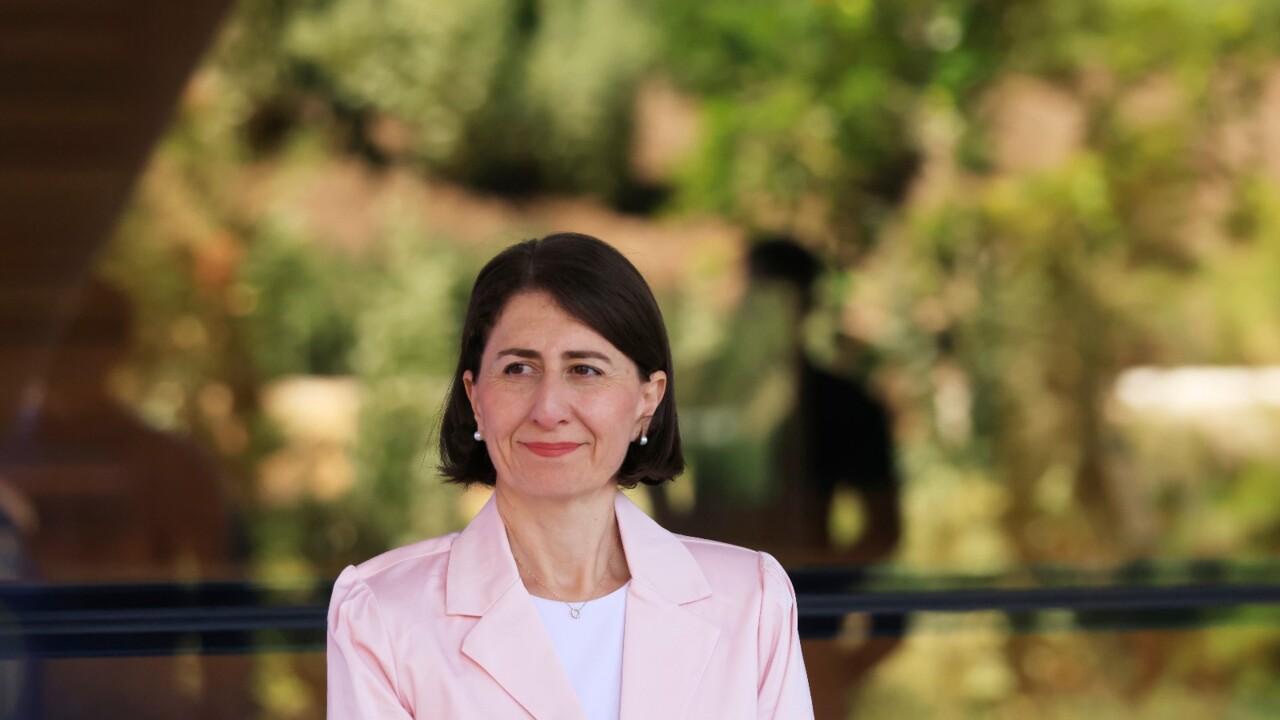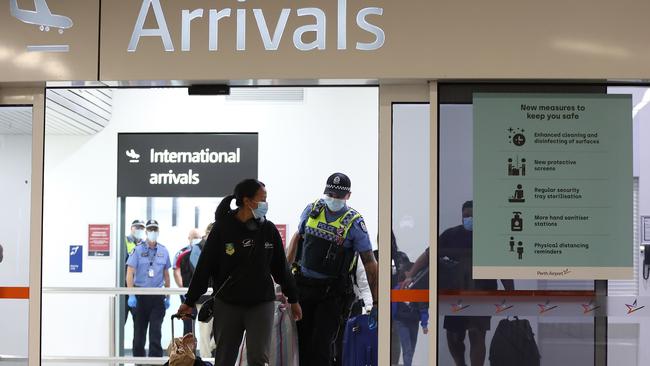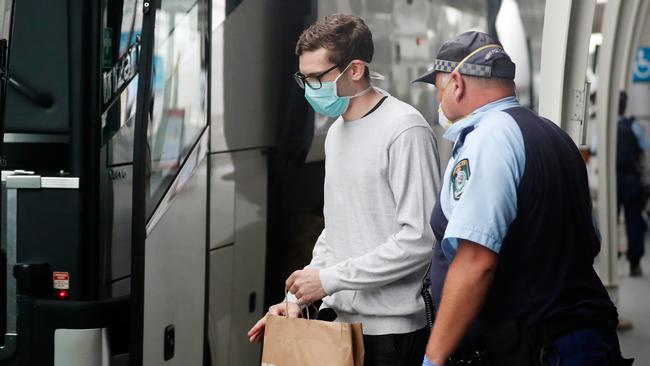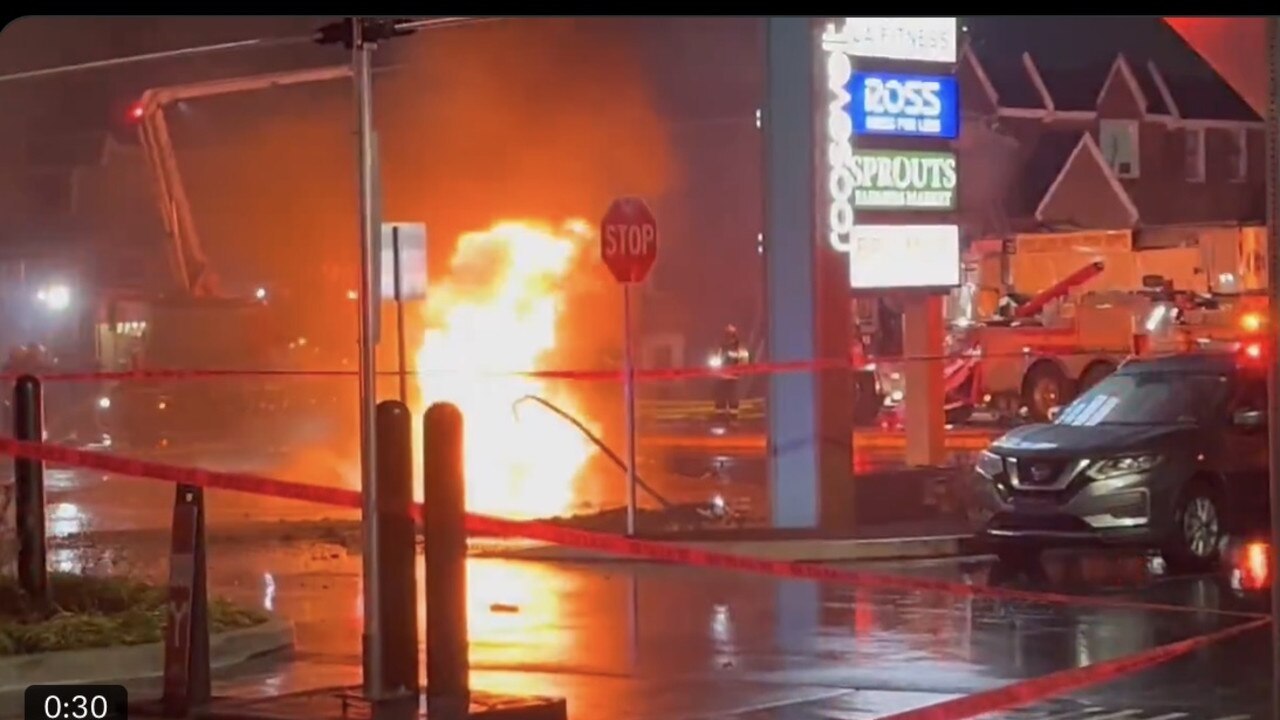The 16 barriers to the restart of international travel that airlines want streamlined
It takes over an hour to clear 20 people arriving into Australia and airlines say the 16-step system is a big barrier to flights restarting.

Any move towards resuming international travel in Australia will first need to address the extreme level of complexity now in place at airports, with no less than 16 processes for arriving passengers and even more for crew.
The Board of Airline Representatives of Australia sounded the warning, based on reports it was taking an hour to clear as few as 20 passengers from flights, because of the large number of steps involved.
Upon landing, officials from Australian Border Force, the Australian Quarantine Inspection Service and the local health department were required to board the aircraft, confirm the number of crew and passengers on board, and issue a clearance to open holds and disembark.
From there, ABF and AQIS escorted passengers to health screening areas where they underwent temperature checks and questioning before entering the screening area for more questions.

Providing the passenger was then cleared to enter the country, they moved onto passport control, followed by baggage collection, on to pre-customs clearance and customs.
After that passengers were directed to a staging area for hotel transport where they were asked more questions by state police and Australian Defence Force personnel, who then escorted them to the bus, under the watchful eye of Australian Federal Police.
Once boarding was completed, each bus was accompanied to the quarantine hotel by two motorcycle police escorts.
Police were also required to accompany international aircrew who followed the same processes as passengers, as well as undergoing a Covid test.
In many cases, the test results were not even returned until after the airline workers had flown out.
BARA executive director Barry Abrams said under those operating requirements, it would not be possible to significantly increase flights and passengers.
“The current arrivals process cannot be practically ‘upscaled’ for more passenger arrivals which would also greatly increase the health and police resources required,” Mr Abrams said.
“Arrangements will need to be greatly simplified and streamlined to support more flights and passengers.”
Currently just 13 flights a day were landing in Sydney from overseas carrying a total of 215 passengers; a figure that was about to be reduced to 108 from September 8.
Pre-pandemic, 110 international flights operated into Sydney each day delivering more than 30,000 arrivals.
Mr Abrams said it was hard to see how they could return to those figures if the current arrangements remained in place.
“A workable model for international aviation cannot be a complex framework of flight requirements into Australia that tries to divide up the status of passengers via the arriving flights,” he said.

“Any future arrangements will need to be clear and simple, to ensure airlines can operate consistently and efficiently, and passengers can have confidence in being able to understand the regulations that are in place.”
BARA was keen to engage with governments to discuss plans for the safe and gradual increase of flights, as Australia approached the benchmark of an 80 per cent vaccination level.
Many questions remained however around the requirements for travellers, such as vaccination, Covid-tests and health passports.
Mr Abrams said what they wanted to see, was a set of clearly defined expectations and operating practices that would require far fewer government resources.
“BARA is unaware of any planning documents that contemplate how the processes for passengers and aircrew will be simplified and streamlined, which are necessary for a restart to international travel,” said Mr Abrams.
“Work on this needs to occur quickly to allow greater travel options later this year.”
While “useful engagement” between airlines and government had to date been limited, Mr Abrams said the opportunity for collaboration remained.
Over the past 18 months, BARA’s 33 airline members had gained valuable experience, data and lessons that would be valuable to government in progressing the “national plan to transition Australia’s Covid-19 response”, he said.
“Engagement with industry now has the potential to both free up health and police resources for immediate use outside international aviation as well as establish the foundations to safely restart international travel later this year,” added Mr Abrams.



